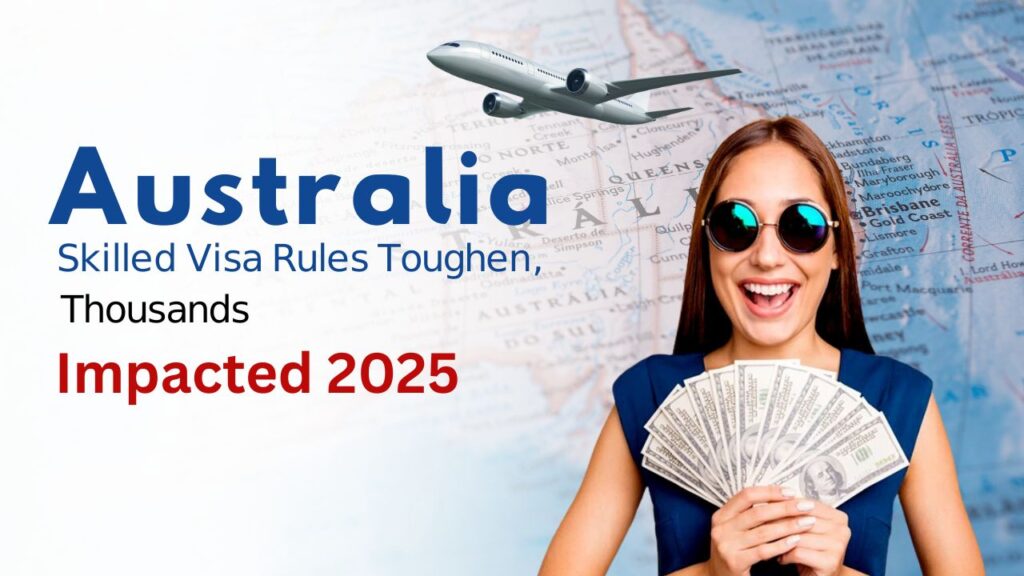Australia’s skilled migration program is undergoing a major change in 2025 with the government raising the Skilled Visa income threshold. This adjustment is expected to significantly affect thousands of migrants who aspire to settle and work in the country. The higher threshold aims to ensure that migrants entering Australia contribute effectively to the economy while also filling genuine skill shortages. However, the increase has sparked debate, as some believe it may make it harder for skilled workers in lower-paying industries to qualify, potentially reducing opportunities for many aspiring migrants.

New Skilled Visa Income Threshold Rules in Australia 2025
From 2025, the Australian government has implemented a new income benchmark for skilled visa applicants. The threshold has been increased to reflect the rising cost of living and to ensure that migrants earn wages comparable to the local workforce. While this move is intended to strengthen the quality of the migrant intake, it also means that applicants must provide higher evidence of their earning potential before being considered eligible. Experts believe this rule could affect sectors such as hospitality, aged care, and entry-level roles, where average salaries may not always meet the new standard.
Impact on Migrants and Skilled Workers in Australia
The raised threshold may bring both positive and negative impacts. On one hand, it ensures that migrants are financially secure, reducing the chances of wage exploitation. On the other hand, many skilled workers, particularly those in essential services with modest salaries, may find themselves excluded despite being highly qualified. This could create shortages in critical industries that heavily depend on migrant labor. Migrants planning to apply must now reassess their eligibility and prepare stronger financial documentation to meet the updated income benchmark under Australia’s skilled migration policy.
Government’s Reasoning Behind the Skilled Visa Threshold Increase
According to the Australian government, the change is designed to ensure that migrants are not only skilled but also adequately compensated for their expertise. Authorities argue that this prevents underpayment and aligns wages with national economic priorities. The new policy also intends to ease pressure on local workers by reducing wage competition in lower-paying jobs. However, migration experts caution that while the reform strengthens the economic focus of Australia’s visa system, it may inadvertently shrink the talent pool by discouraging skilled but modest-earning professionals from applying.

Preparing for Skilled Visa Applications in 2025
Applicants planning to migrate to Australia under the skilled visa category should now carefully review the new income threshold before submitting their application. Migrants must focus on industries offering higher pay packages to meet the eligibility requirements. It is advisable for applicants to seek professional visa consultation, prepare proof of salary offers, and highlight relevant qualifications to stand out under the stricter rules. With thousands expected to be impacted, proactive planning is crucial. Migrants who meet the threshold may benefit from faster processing, while others might need to explore alternative visa pathways.
| Category | Previous Threshold | New 2025 Threshold | Who Is Affected |
|---|---|---|---|
| General Skilled Visa Applicants | AUD 53,900 | AUD 70,000 | All new skilled migration applicants |
| Hospitality & Aged Care Workers | AUD 53,900 | AUD 70,000 | Likely to struggle due to lower average wages |
| IT & Engineering Professionals | AUD 53,900 | AUD 70,000 | Mostly unaffected due to higher salaries |
| Healthcare Workers | AUD 53,900 | AUD 70,000 | Mixed impact depending on specialty |
| Education & Training Staff | AUD 53,900 | AUD 70,000 | Some may face challenges meeting the new standard |
 GWW Credit for Homeowners: Water-Bill Credit Up to $240 – Applied Automatically, Who Qualifies
GWW Credit for Homeowners: Water-Bill Credit Up to $240 – Applied Automatically, Who Qualifies
FAQs – Skilled Visa Income Threshold Australia 2025
Q1: What is the new skilled visa income threshold in 2025?
The new threshold is set at AUD 70,000.
Q2: Who will be most affected by this change?
Migrants in lower-paying sectors such as hospitality and aged care.
Q3: Why did the Australian government increase the threshold?
To ensure migrants earn fair wages and align with economic needs.
Q4: Can skilled migrants still apply if they don’t meet the threshold?
They may need to explore alternative visa categories or state sponsorships.
How will the raised skilled visa income threshold affect migrant populations?
It could impact thousands seeking visas.




